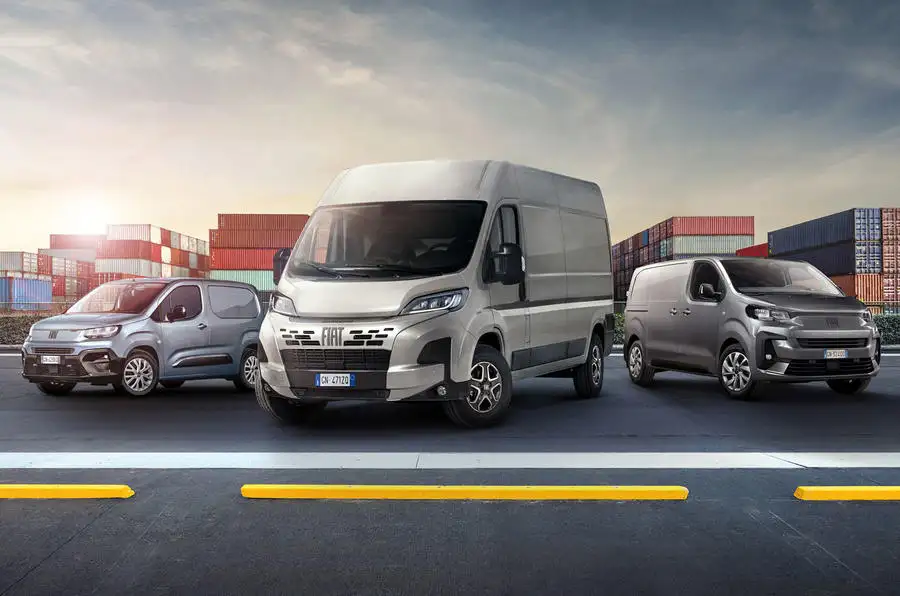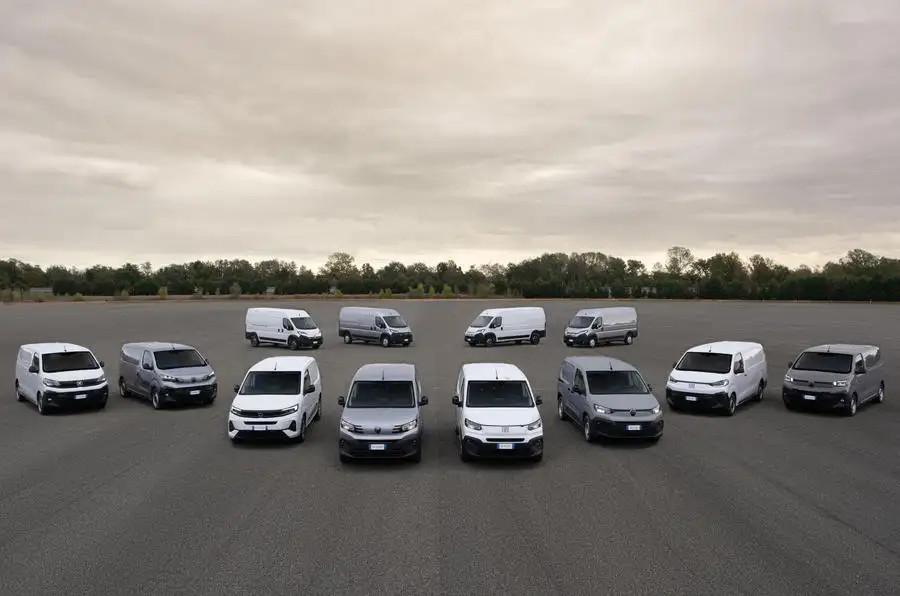Citroën, Fiat, Opel and Peugeot take on Ford with longer range and improved technologies.
Stellantis has renewed its van line-up, kicking off its campaign to overtake Ford as the world leader in the light commercial vehicle market by 2027.
The headline changes include significant increases in the capability of its electric vans, claiming best-in-class range figures in the compact and large van segments.
The firm’s small electric van – sold as the Citroën ë-Berlingo, Fiat E-Doblò, Opel/Vauxhall Combo Electric and Peugeot e-Partner – now yields a range of 330km between charges, 50km more than previously.
Inside, each van has been given a larger 10-inch infotainment display, as well as new driver-assistance systems including level-two autonomous driving capabilities and a 360-degree camera view.
The vans can also connect wirelessly to fleet management systems, allowing operators to organise cost-effective charging and maintenance, as well as on-board coaching for economical driving.
Stellantis’s medium electric van – sold as the Citroën ë-Dispatch, Fiat E-Scudo, Opel Vivaro Electric and Peugeot e-Expert – also receives a range boost.
Vans equipped with the 75kWh battery now yield a range of 360km, up 45km. They receive the same interior adjustments as the small vans.
Stellantis’s large electric van – sold as the Citroën ë-Relay, Fiat E-Ducato, Opel Movano Electric and Peugeot e-Boxer – receives a larger 110kWh battery, delivering a range of 460km.
This can also be recharged at rates of up to 150kW, a significant improvement on the previous cap of 50kW. They too receive the same interior tweaks as the small and medium vans.
The suite of upgrades brings “no compromise” in the vans’ capabilities, such as carrying capacities, said the firm.
All of the firm’s electric vans also receive a new 400V power-take-off system, allowing electricity to be drawn from their traction batteries, rather than requiring a separate source.
Amid the technical upgrade, the interior and exterior styling of each van has also been updated to better reflect each brand’s prevailing design identity.
Citroën’s new oval-shaped logo has been grafted onto the faces of its vans and the mid-sized Dispatch receives three-pronged LED headlights inspired by the Oli electric car concept. Inside, each van receives the brand’s ‘comfort’ seats.
Fiat’s vans, meanwhile, receive clean-cut surfaces with large ‘Fiat’ wordmarks. The four-bar logo – used on its passenger cars between 1968 and 2003 – also makes a cameo on each model’s grille.
Peugeot’s vans receive a flush, sealed-off grille and the lion’s-head brand identity unveiled in 2021. The interior of each uses Peugeot’s i-Cockpit interior design, which pairs a high-set instrument panel with a small steering wheel.
The Opel/Vauxhall vans receive the Vizor grille, with a glossy black bar running along the front, interlinking the ‘Compass’ LED headlights. These can be upgraded to matrix units, which automatically partially dim to avoid dazzling oncoming traffic.
The diesel variant of each van will receive the same interior and exterior tweaks, but Stellantis has yet to announce any technical changes.
The firm also doubled down on its commitment to hydrogen-electric powertrains. It already offers a hydrogen-electric powertrain for its mid-size vans, and it will now add a similar option to its large vans. They will offer a range of 500km and the ability to refill in five minutes.





